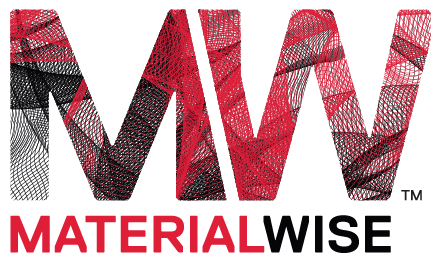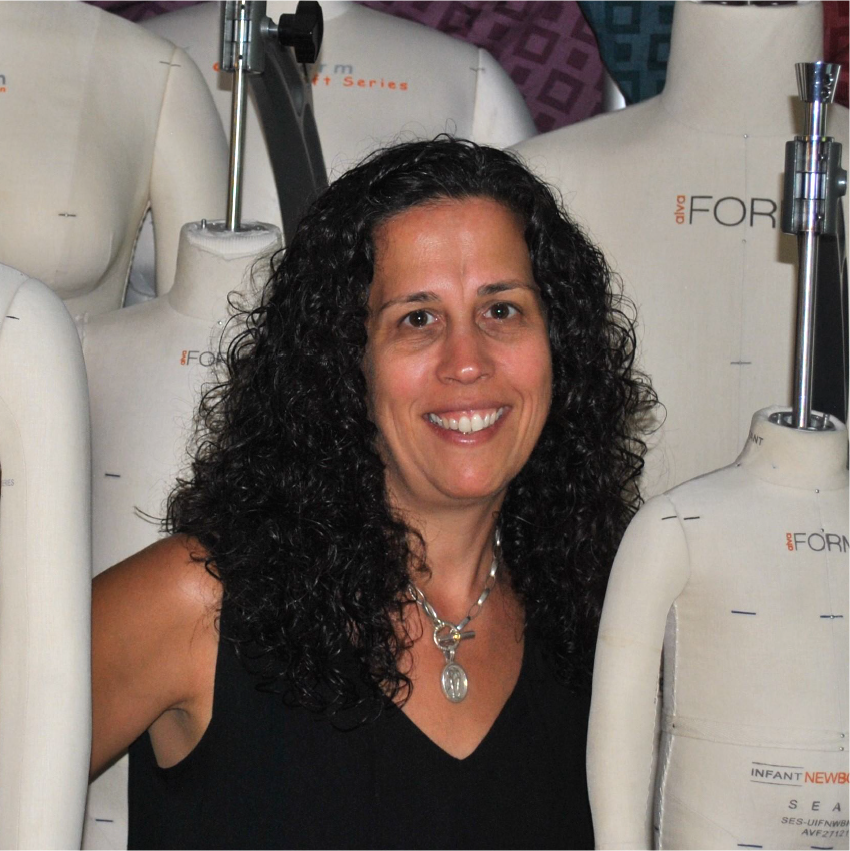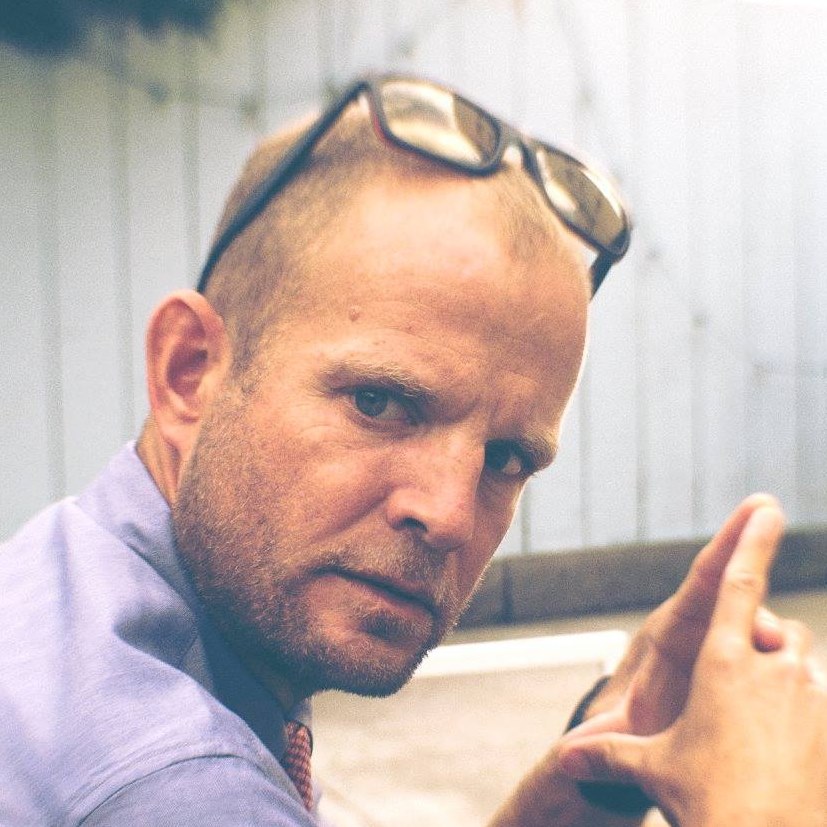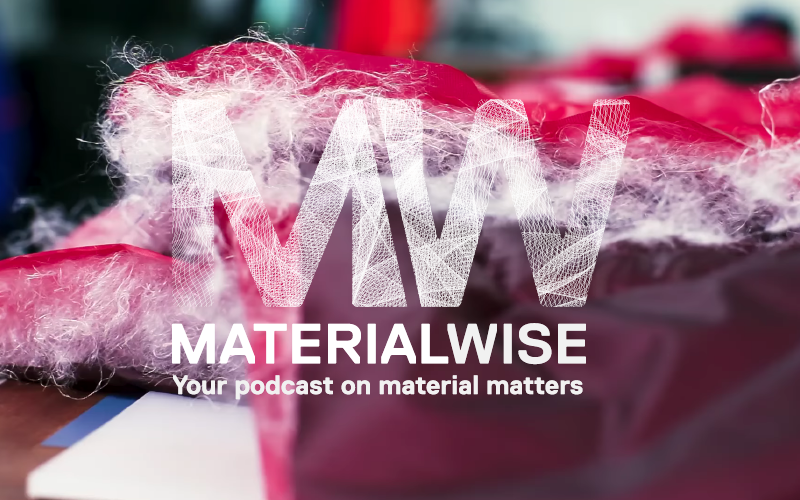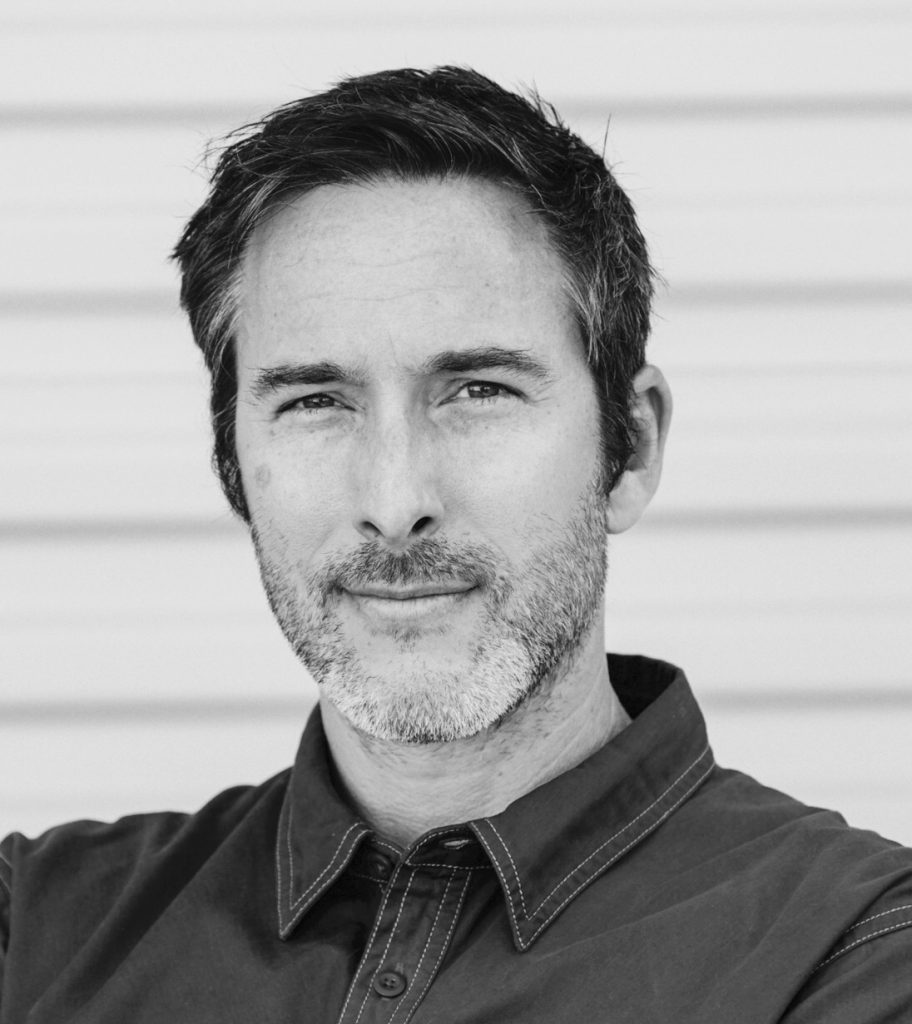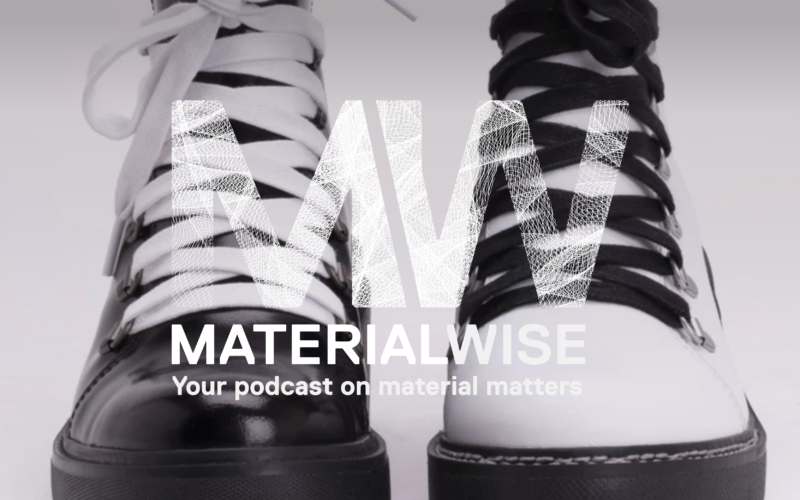Episode 07: Myranda Caputo | Bespoke Branded Fit
Myranda Caputo of Bespoke Branded Fit on demystifying brand sizing and the future of fit standard
With her 20 plus years of technical pattern making and product development experience with brands such as Hanes, Dick’s Sporting Goods and L.L. Bean, Myranda Caputo knows a thing or two about how a garment should fit. Upon seeing the recent shift among brands focusing more on developing customized fit standards tailored to their target markets and customers, Myranda realized the growing need for her technical skills and founded Bespoke Branded Fit. In this episode, we talk about how brands go about developing their own fit standards and why there can be such a discrepancy. Myranda shares how function and aesthetic, not to mention materials, are key factors when it comes to fit. She also shares how brands are helping consumers purchase the right size online via interactive fit charts, 3D body scans and more. For more information on Bespoke Branded Fit, visit www.bespokebrandedfit.com.
Myranda’s Interview Transcript
Nancy: Hello. I’m Nancy Fendler and you’re listening to Material Wise, your podcast on material matters. It’s my chance to talk to designers, product developers, and other guests in the outdoor, fashion, home furnishings, among other industries about what inspires and influences them to create, why and how they select the materials they choose and the relationships they built with their customers and industry.
On this episode, we’re going to talk about fit. Some say that fit is the most important aspect of any garment. Once you find that special item that fits you oh so perfectly, you’ll become a loyal fan of the brand who made it. My guest today is Myranda Caputo, an apparel development consultant and fit specialist with Bespoke Branded Fit. Myranda has 20 plus years of apparel industry experience and has worked with leading brands such as Hanes, Dick’s Sporting Goods, and L.L Bean, to name a few. Her extensive background includes product development, pattern making, process evaluation, and developing standards for technical design. Myranda is going to share with us what she believes goes into developing the perfect fit.
Nancy: Oh, Myranda, thanks so much for joining me on Material Wise.
Myranda: Thanks, Nancy. I’m so glad to be here today.
Nancy: Oh, good. How did you get interested in fit pattern making?
Myranda: Nancy, when I was a young kid, I got involved with 4H and learned how to sew. After that, I decided I wanted to go to college to learn about developing apparel. I had initially gone as a design major, but then ended up in apparel management degree with a design concentration. It guided me to all the technical aspects of apparel, pattern making, grading, draping, tech packs, all the aspects on the back end in order to make the garment happen so you can actually cut it out of the fabric. You can take a design sketch and develop an actual garment.
Nancy: Wow. I know it’s so technical. I’ve seen it … I remember being at the Bobbin Show. It was a trade show eons ago-
Myranda: Yes.
Nancy: And all that equipment that had to plot these patterns and make sure that you’re using as much of the fabric that you can.
Myranda: The Bobbin Show was a great show. I went several times as a college student as well and enjoyed going and seeing the new technology and where it was going. Some of the fun aspects, even back then, were just the initial steps to scanning, at that point, a mold of a foot in order to help develop shoes three-dimensionally.
Nancy: Yeah.
Myranda: In a Gerber system.
Nancy: Wow. Yeah.
Myranda: Times have changed.
Nancy: Yes. Yes. Right off the bat, I have a question that maybe some of our listeners have as well and hoping that you can demystify it. Why am I sometimes a size four in one brand and then a size eight in another?
Myranda: Nancy, this is one of the fun aspects of apparel – that every brand is able to develop sizing the way that they view their brand should be developed and based on their target market. Over the years, though, vanity sizing has really come into play. Some companies have put the numeric size so that even though it fits a larger dimension, the size is smaller numerically on the tag. That way, you’re perceived as buying a smaller size. Some brands, though, over the years, focus on different body types – the body type that they’ve defined for their customer based on such as age, gender clearly, activities the person may be participating in. These all effect our body shape. If you’re more athletic, you’re going to have a different shape than somebody who’s potentially more sedentary. Also, it plays into the brand dynamic and brands wanting to create customer loyalty. They’re looking to stick to their body shape, which is why you may not fit into that brand because you may not be their defined body shape.
Nancy: That’s really interesting. Yeah. That makes sense. Also, what you mentioned about an athletic brand might be a bit different in sizing than a sportswear brand because of the activity that they’re doing. Is that-
Myranda: Exactly, Nancy. That’s exactly true. When you look at athletic body shape, shoulders are squarer, people are more muscular through the thigh area. They’re trimmer through the waistline. We can think of the men’s traditional suit where it’s a little fuller fit, but then you’ve … we’ve all heard of the athletic cut suit for men’s-
Nancy: Yeah.
Myranda: Which is trimmer through the waist and the hips. That holds true to the body shape in general when you’re looking at more athletic brand. Then, on the flip side, when you’re in more sportswear oriented, you … the waist might not be quite as trim as what you would see in athletic brands.
Nancy: Mm-hmm (affirmative). Interesting, because I do have my go-to brands. Sometimes they’re the smaller sizes because it just makes me feel so good. In a previous conversation we had, you mentioned that fit needs to be defined in two ways: function and aesthetic. Can you explain?
Myranda: Nancy, as we were talking about how there are different brands for sportswear and athletic wear, so fit has your designer drafting for the design. When the designer’s drafting the design, they have to think of what is the end use of that garment. Are you using it to go fishing, running, biking, hiking, sitting in a desk all day? In general, just comfort wear throughout the day? Or, every day basic activities, whether you’re a mom running after kids or doing a triathlon, they’re thinking about what that garment is going to be worn for. They want it to be designed so that it’s aesthetically appealing to the customer and up with market trends, whether it’s color, the fabric type. They’re keeping in mind the fabric type and what’s available in the market and who they’re directing that to be based on the end-use.
Then, they will work with their technical designer or pattern maker to make sure that that fit is functional for the garment. The pattern maker needs to think about, “Is it a running activity? What kind of movement does this person need to be able to do in this garment so that it is functional?” It’s really difficult to think of putting on a suit jacket to maybe even clean your house or to go out for a walk because it really wasn’t intended for that function. You may not have the movement that you need in the sleeves to be able to lift your arms up over your head or to reach for something as easily.
Nancy: It’s really important for brands to communicate their fit standards, do you think?
Myranda: Absolutely it is. This is one of the biggest challenges brands are having is we’re going to this virtual market where people can’t try on clothing virtually (even though it’s in the works so to speak), to know that that fit is going to work for their body shape or for the activity they are going to be participating in. Frequently, in the past, we’ve gone to a retail establishment and gone to the fitting room and tried on that garment to make sure it works for our body shape and for the activity we’re doing. Going forward, we’re looking at a virtual market where we’re viewing a garment online, potentially either on a person or a form or just sometimes even flat where it’s not even viewed on a person, to gain an understanding of what that garment is. We can read about what the fabric is, but the same time the size chart that’s frequently provided gives measurement, but really not what that body shape is.
To help clarify that, if I tell you to draw an eight-inch line, you can draw it straight. You can draw it in a squiggle with as many curves as you want. You can draw it into a circle. Measurements can be distributed in different ways. You could look at the woman’s chest, for example, and maybe she has a 36 inch circumference on her bust, but it doesn’t tell us what her cup size is. It doesn’t tell us she’s well-endowed or not. If that sports bra is going to fit her properly, she’s guesstimating based on that circumference measurement, but not knowing really where her … the body shape was distributed when they developed the garment.
Nancy: I’ve read that there are companies that are using body scanning. Is that correct? Can they send a picture of your body or scan and send it into the manufacturer and there could be something more custom fit?
Myranda: They can do that. There are manufacturers that are and have done scanning in the past to develop custom fit. I know Levi’s did it for a while out of their New York office. I’m not sure if they’re still doing it or where else. The other big development in the apparel industry is they’re starting to use the 3D scanning to develop avatars within their system to develop a preliminary fit without even fitting a garment. Then, on top of that, they can modify that avatar if they needed to in order to meet a custom body shape potentially so that they can do custom fits virtually on the computer and then also send out an actual garment that should fit more true based on the avatar.
The other interesting thing that I’ve seen recently is people are making smart apparel, where it’s able read your body. I would say it’s a different type of scanning where you put on, most likely in a pair of pants is what I’ve seen, and it understands your body shape and you can download the information and it can suggest to you what jeans may fit you best, what brands may fit you best, and based on also the style details that you might be looking for. If you’re looking for the perfect skinny jean, we’re getting the impression that some of these technologies are coming about that will be able to help you find that jean.
Nancy: That’s great. The tools that make it easier to buy something and not order multiple-
Myranda: Absolutely.
Nancy: Or have … or having to go to the tailor or to …
Myranda: That’s the biggest problem, Nancy, is there is no standard size.
Nancy: Yeah.
Myranda: I know that I’ve seen on some brands, who really work hard to define their shape and how the customer can relate to their product, have worked on that through their interactive size chart. What’s really interesting is one of the companies out there has tailored their size chart online so that you can click through and say, “What type of clothing do I like? Do I like it more relaxed? Do I like it tighter?” Then you can ask what brands you currently use and what sizes you’re currently buying in those brands. Then it can tell you what size they suggest for their brand.
Nancy: Do you know what the name of that company is?
Myranda: It’s The North Face. I’m not trying to-
Nancy: Yeah.
Myranda: Plug anybody, but it’s really … it’s an interesting interactive tool so that you can create a guide versus just based on those measurements.
Nancy: Yeah. That’s fascinating. This podcast is about materials, so how do materials come into play when you’re pattern making or fit or customizing fit?
Myranda: With what I do with materials and pattern making, you really need to keep in mind, “Is it a woven? Is it rigid? What sort of movement is needed in this garment and how do I accomplish that in the shape of my pattern with the body shape I’m trying to fit so that there’s an appropriate amount of ease in order to give somebody that movement?” On the flip side, if I’m doing a high stretch garment for swim or active apparel, I need to think about how compressive does that fabric need to be against the body? Is it true compression? Is it just meant to skim the body? Because it’s so close to the body, have I taken out enough and have I given that person, still, the movement that they need? Because even though something may be next to skin and really form fitting on the body, if you still don’t have the fabric in the right places, you’re not goning to get the movement that you need. It’s important to work with your design team, your fit model, and understand the expectations for that garment so that we’re not tailoring something that you cannot move in.
Nancy: Right. You’re constricted.
Myranda: Exactly.
Nancy: Yeah.
Myranda: We don’t want your clothes wearing you, where you feel like you’re stuck in a a garment.
Nancy: Ugh. No. No. Over time, do you think … have you seen body shapes change, do you think? You’ve been doing this for, what, 20 some odd years?
Myranda: In the time that I’ve been working in pattern making and apparel development, the thing that’s become really apparent and amazing to me is that, initially, the standard for new body measurements was based on a government study where they strictly measured people. It was the challenge of – “Where is the fullness distributed on the body, because you just have a measurement?
Those numbers were crunched and kind of folded into a data table to look at the differences between the sizes. Today, up … I don’t know how long ago it started, but Alvanon has worked with a company in order to scan people and to gain an understanding of where the body fullness is distributed. They’ve compiled measurements, but also compiled shapes so that they were able to gain that understanding. With those differences, I think that we’re seeing an evolution of the body shape because virtually we can now view it, versus prior it was just a measurement that we were viewing on paper.
The other thing is that I know that there’s a more recent study coming out as well where they’re … I believe it’s ….Size North America is doing additional scanning. The thing that’s also interesting with these body scans is they also take into account nationality, activity level, age range, all this data so that you could tailor to your market. If you’re a company that wants to tailor to somebody who is 15 to 25 (years old) and is athletic, you could pull that data and really tailor to that body shape, so that if you’re developing an athletic line, you can really truly focus on that customer. If you’re choosing to go after the 40 to 55 year-old woman who is working in an office and you want to develop sportswear for her everyday life in the office, you can tailor that body shape as well. You can note that you want to mix of athletic and every day. They’re capable to blend that. It’s interesting to see how that evolves.
Nancy: That’s a great tool.
Myranda: It’s a great tool.
Nancy: It really is. It can segment. Brands can really segment their market and tailor to their customer.
Myranda: They can understand their body shape-
Nancy: Yeah.
Myranda: Typically, from my perspective, I think brands are looking at what the design elements are that are out there. They’re chasing after the market and the design aspect. It’s also important, and we are seeing a shift in the market and companies really trying to focus on their fit. I’m interacting with people more on LinkedIn and as I’m working with more and more companies, I’m gaining an understanding that these companies are focusing more on their fit and how they’re tailoring to their market. One of the ways that I’m receiving that information is through block patterns. A company can identify their body shape and they can identify it for men’s, women’s, boys, girls, women’s plus size, so they know their shape. On top of that, they’re capable of developing a block pattern which will give them their base size fit, so that they can have a standard when they’re working with a range of manufacturers.
Because as a retail establishment, when you’re developing, you’re looking for factories that can manufacture based on the fabric you want to use, based on duties, depending on the region that that product is coming from, and cost. We are all clearly chasing after the lowest possible cost. In order to do that, block patterns are a great way for companies to hone their fit, use the block, send it to their vendors. Then they can also, on top of that, put their grading on their block pattern so that they’re able to define all their sizes so that the vendor can understand the visual of what the expectation is in the grading, which is the development of all the sizes.
Nancy: Where do you see the trends in pattern making and fit going?
Myranda: I think that the trend for pattern making is that we’re going to see an influx of a need for people who understand pattern making and fit because we have shifted to more of a technical design role, which kind of builds garment initially off of measurements and the design details and sending that to factories. We’ve lost some of that trade here in the US. There are still pattern makers here, but at the same time, for, I would say, at least 10 years, it’s kind of become one of the dying arts. People have filtered out and we’re starting to see an influx of that needing to come back.
I’ve been, through my research and looking at people’s titles and job descriptions, I’ve seen there’s a greater request for pattern making skills and a true understanding of grading and questions from employers about, “Can you really draft a pattern? How would you do it?” I’ve actually even received pattern tests sometimes when I’ve interviewed where they’ve sent a pattern and then wanted you to develop the design off of the pattern to really test your pattern making skills and then also create it. They want you to see that you can develop all the sizes. It’s one thing to look at numbers on a page. It’s another thing to be able to draw the shapes that work to fit the body.
Nancy: Right. It’s such an integral part in the working in collaboration with a designer. You’re basically taking their sketch and making it happen and then working, obviously, with the fabrics and the factories and all that.
Myranda: I think that’s the fun part – because the designer is worried about fit and wanting to see the product get to market on time, but the job of a pattern maker and a technical designer, you’re really collaborating with all those teams along the way, whether it’s your product manager, even merchandising to an extent to understand what they’re looking for, your designer. Then, to work with the factory to make it happen and understand their capabilities in sewing, what is their equipment? Is this something that they can do that I’m requesting? Can I give them a couple different options in order to achieve the desired garment?
Nancy: It must be interesting being in your head. You must look at … People are wearing clothes every day and you’re like, “Uhmm..that fit isn’t right,” or, “It’s …”
Myranda: Well, Nancy, as you know when you’re passionate about something, it doesn’t escape your mind. I do find myself kind of people watching and trying to understand, “What’s special about that garment or why does it fit so well?” Or, on the opposite, “I know what I would change on that pattern to improve that just a little bit.” Then, sometimes, I start wondering, “Would that consumer even notice those changes? Are they so used to it being that way that it’s okay with them?” Or, would they enjoy the changes that I’d be thinking of to make it fit better? Just think about those things, whether it’s children’s wear, swim, men’s wear – all the time I feel like I’m thinking about it – no matter where I am, whether we’re out skiing or running or at the pool.
Nancy: I can’t escape. There’s nowhere. I was thinking about, as you were talking, when I was a little girl. I lived in a rural place. It was very normal for my mom to pick up patterns and go to the fabric store. We had a seamstress that made my clothes. That was not what I wanted. Of course, I wanted to buy clothes off the rack like other girls that lived in cities or whatever. I was in a museum. The Museum of Modern Art had the costume display. I was following a woman from Europe. She was European. She was saying, “They call this Couture.” I had Couture. I had a seamstress make all my clothes when I was little.
Myranda: I did, too.
Nancy: You just don’t do that as much anymore. I think that you’re right. The fit that we get, we tend to just accept based on what fits us the best. Those who take the time to go to have them tailored, it’s great.
Myranda: I am noticing that there is an influx in custom now, that companies are viewing this as a tool to gain market shares where they can offer a custom product. Sometimes it’s custom to fit the body. Sometimes it’s custom based on the customer wanting a different color or a different fabric, if they’re able to offer that. It is interesting to think about and perceive that, “Is this really where we’re going back to, where people really do want their clothes to fit? They’re interested in maybe paying a higher price for something that is going to provide them longer and fit them better.”
Nancy: Yeah. I think so. Buy things that fit and last and can withstand the test of time and(consumers can) buy fewer (products).
Myranda: Absolutely. I think that’s also noted in fabric and fiber. We want things that are renewable fibers or recycled so that they’re more earth friendly. It’s interesting to think about not just the recycled aspect, but what garments are potentially compostable because they’re out of natural fiber. Are we thinking about that as users?
Nancy: Exactly. I know it’s nice to see the industry really thinking along those lines and I am in touch with a lot of fiber materials companies knowing sustainability is all on their top of mind, you know, “How can we be better stewards to the environment?” My last question for you, which I like to ask everyone, is where do you find your passion?
Myranda: I follow up on my passion for fit and apparel development – and in talking to just-like minded people. I really enjoy reaching out to people who are in the industry and are in a similar aspect of industry where they’re working on honing a fit. I also do enjoy just some market research, whether it’s looking at size charts on The North Face or whatever websites are doing to see what they’re doing and how they’re changing fit. I have also … I do pick up some books periodically or some trade magazines just to see … most of that, I would say, is digitally, whether it’s the Sourcing Journal or Rivet or any of the other trade magazines to see what are coming up.
Nancy: Well, thank you. This has been a real learning/educational process for me. I will now make sure that I pay attention to fit and that I have no gaps in my clothes! Thank you very much, Myranda.
Myranda: Thanks, Nancy. It was great talking to you today.
Nancy: Okay. Take care.
Thanks so much for listening to Material Wise. I’d like to thank the incredibly talented Woods Creative for their help in producing this podcast. Jake Nevrla mixes our episodes and our theme music is by Activity Club. For more information on Material Wise, please visit materialwise.co and please subscribe, rate, and review wherever you get your podcasts. Thank you again, and until next time, take care.
